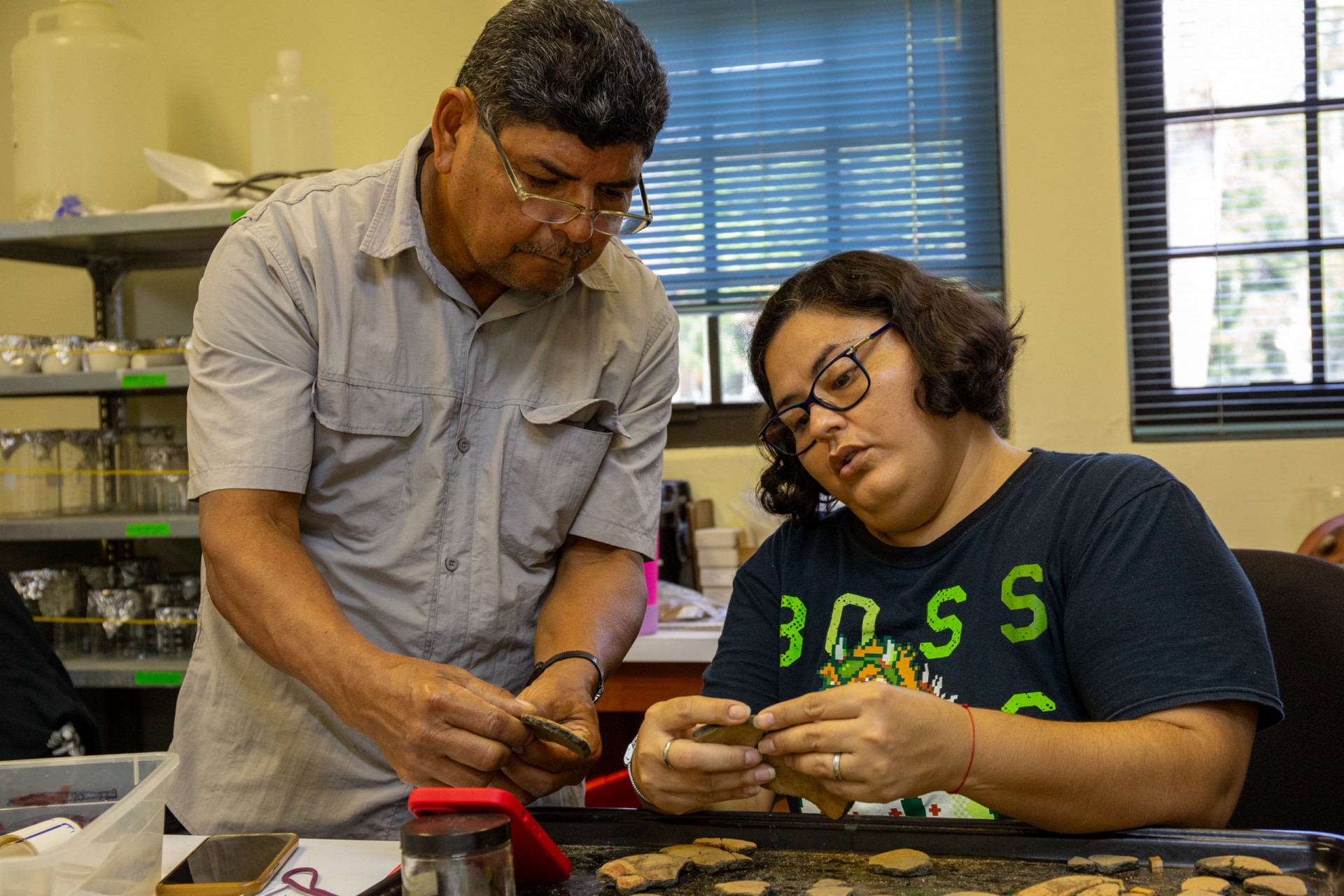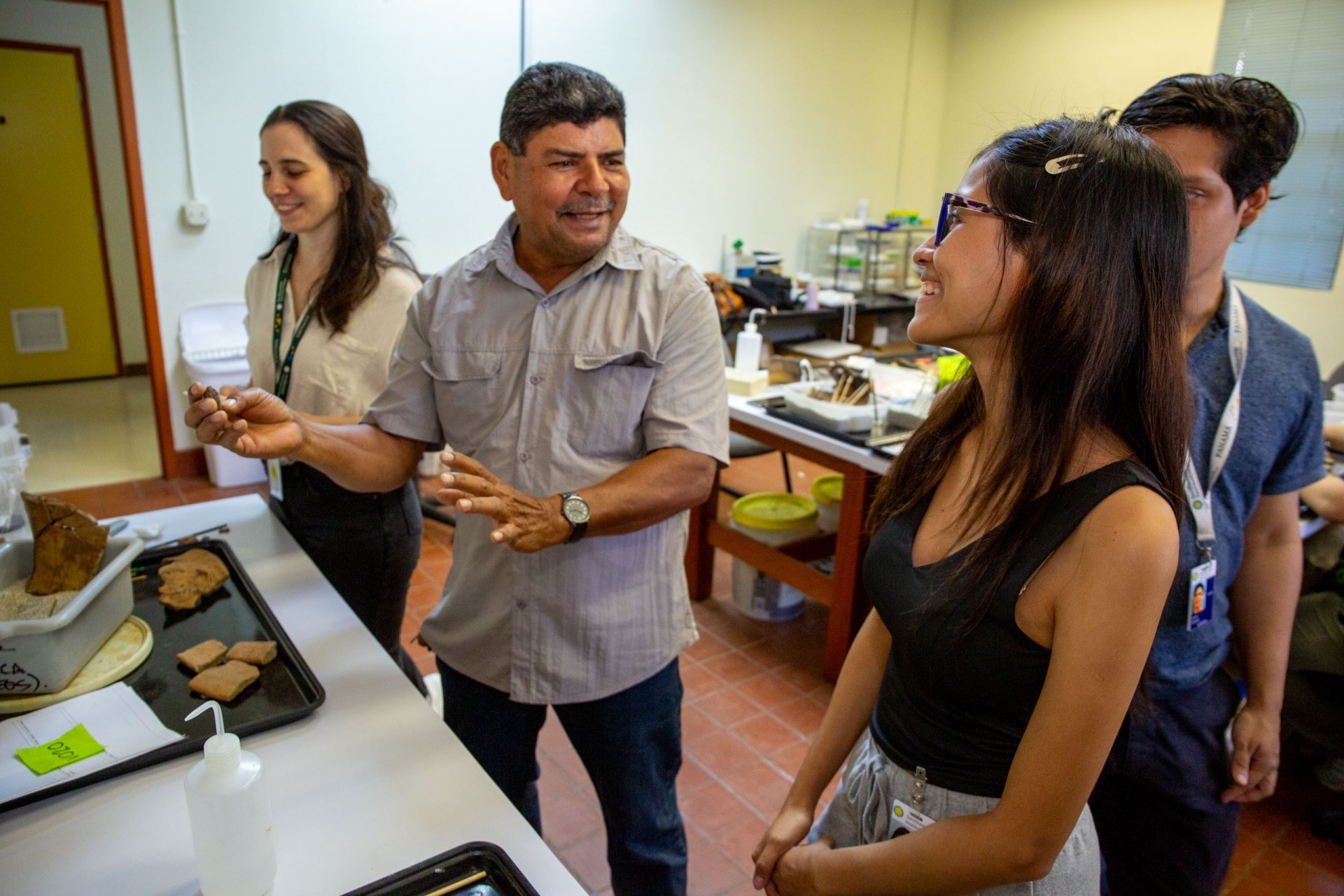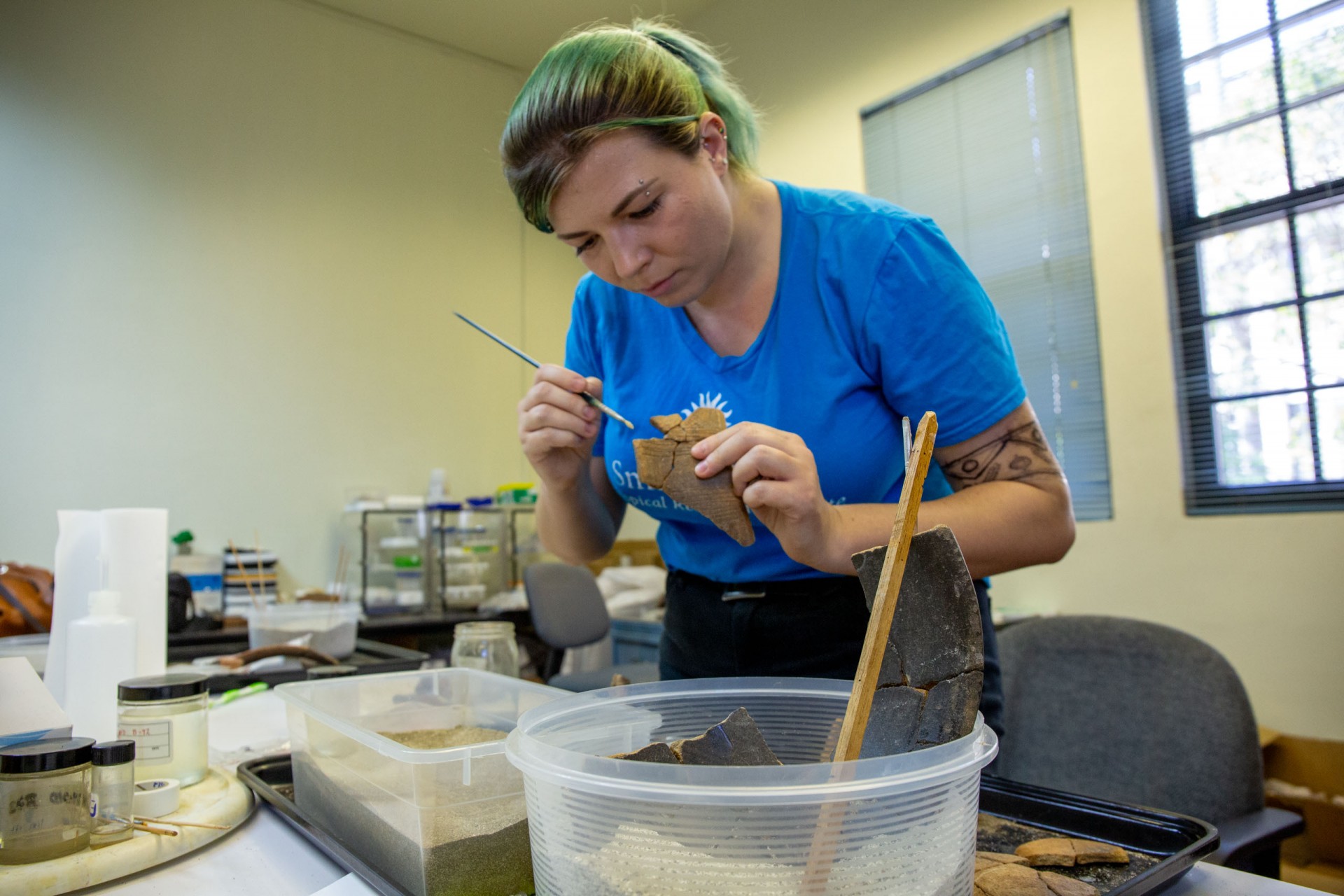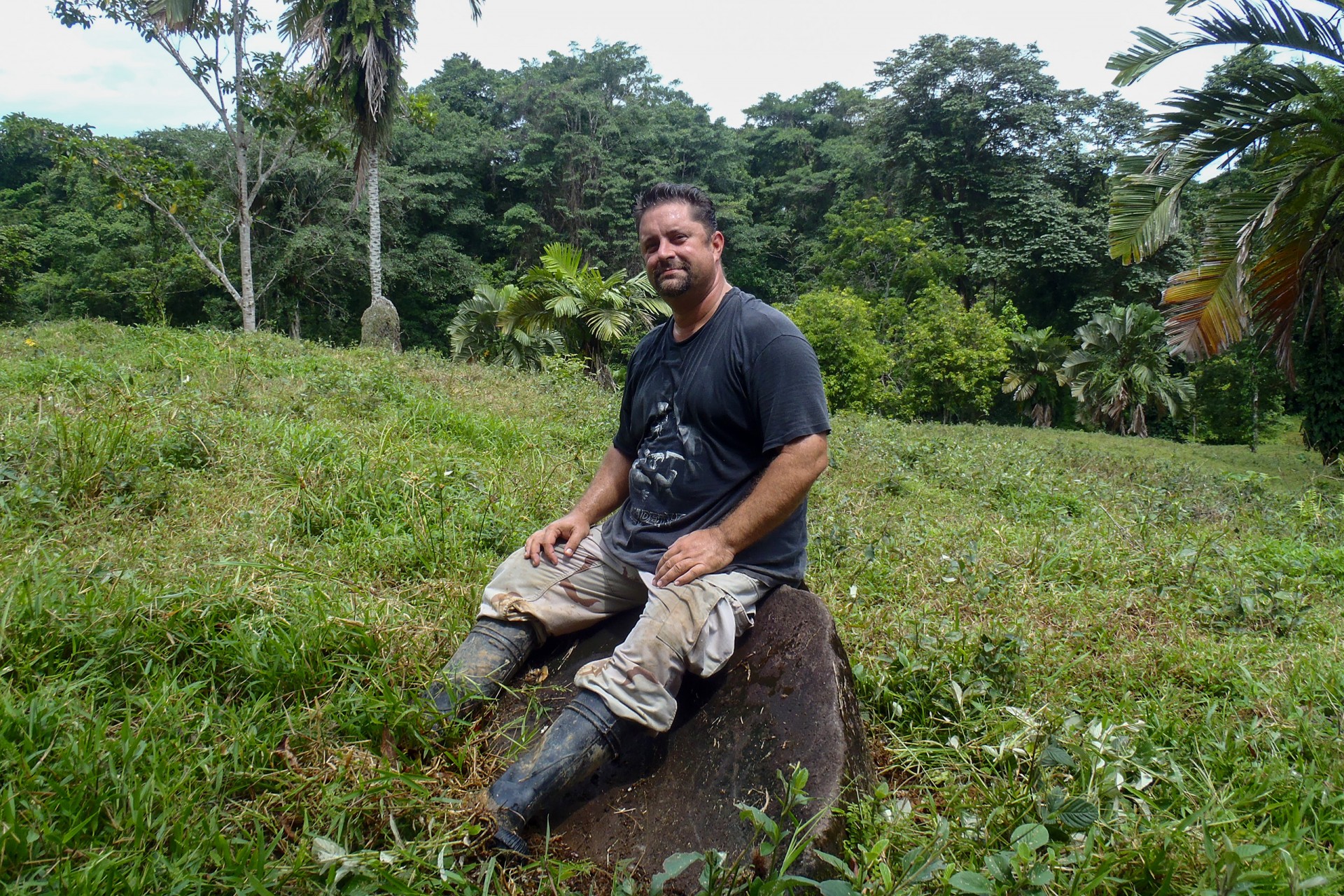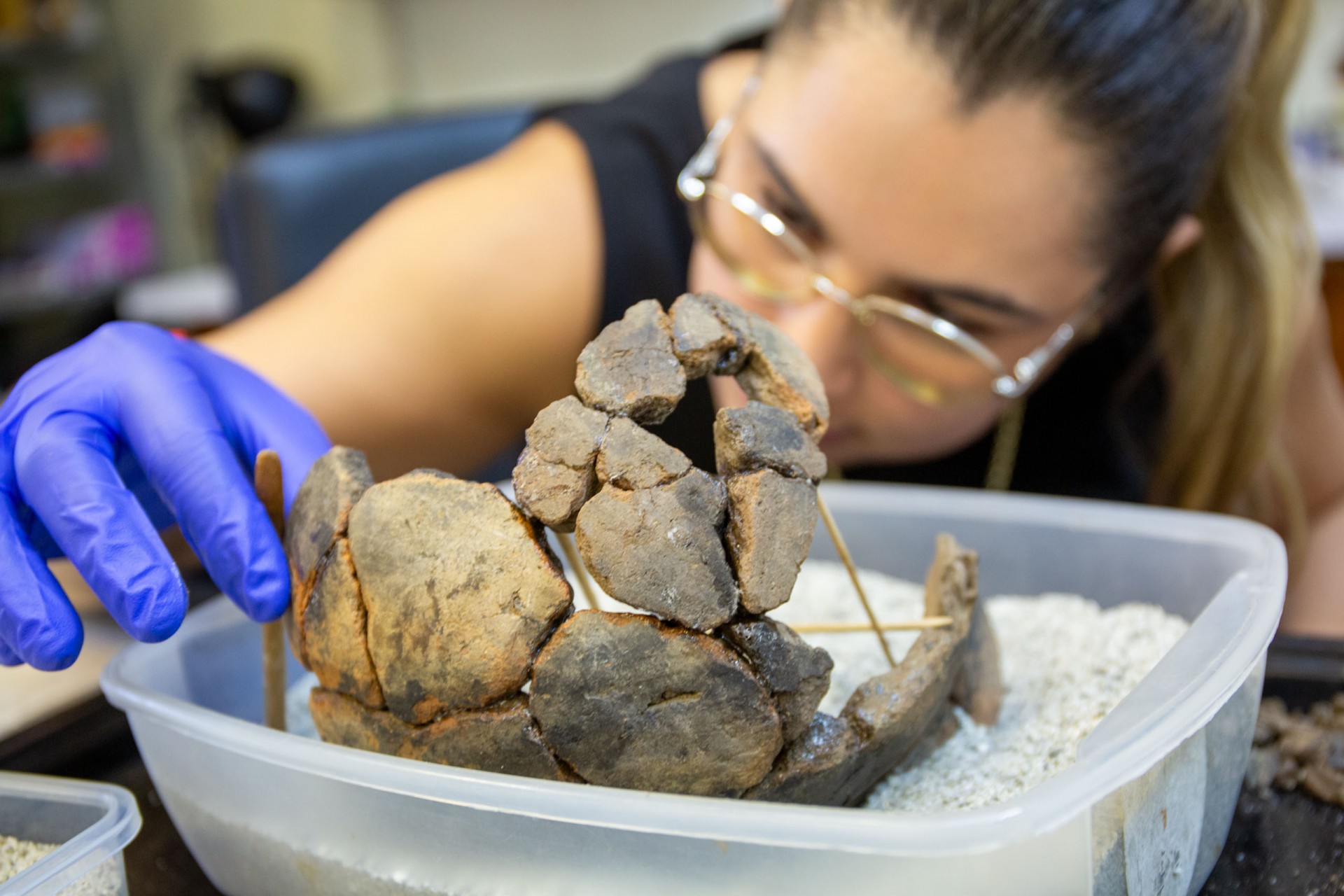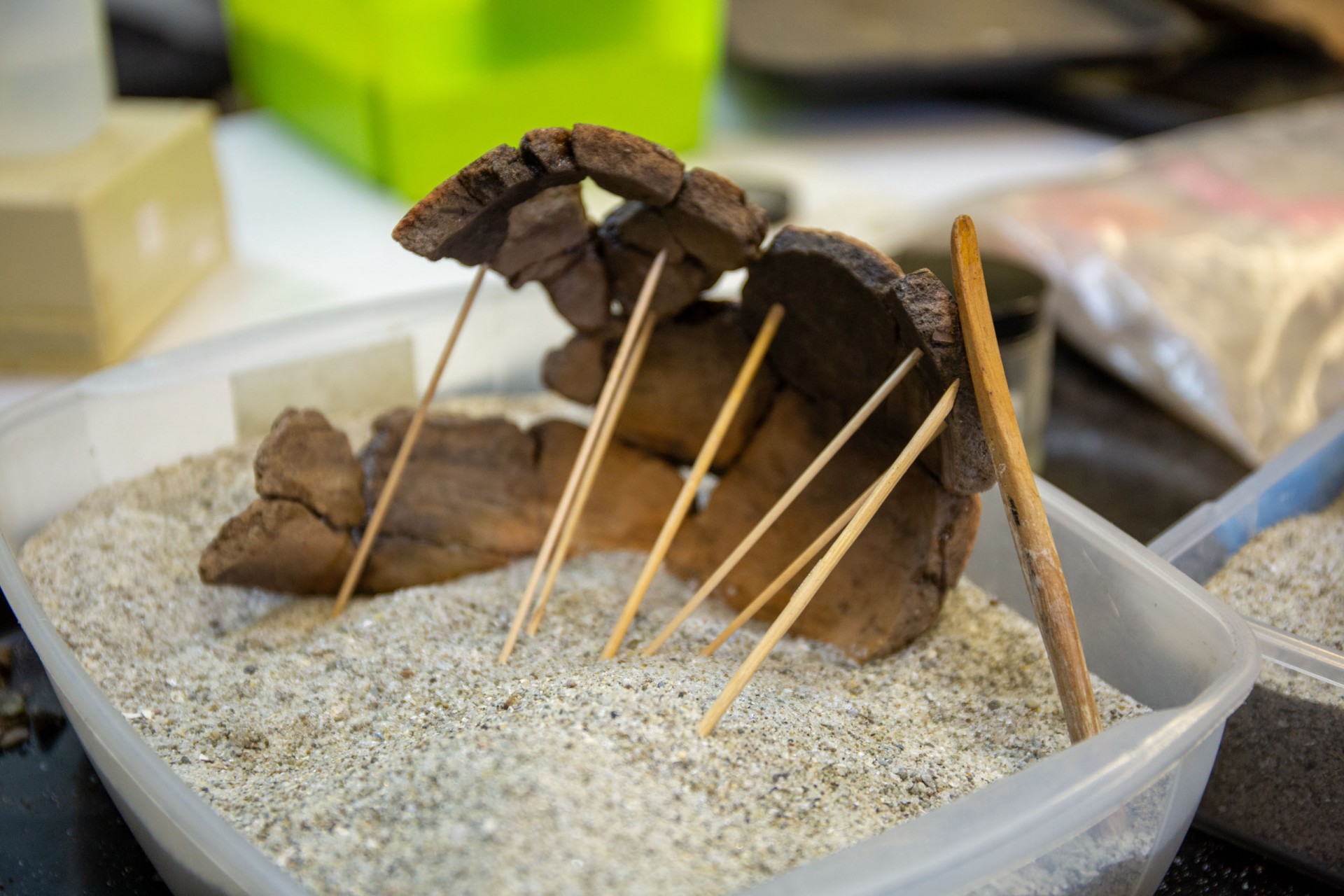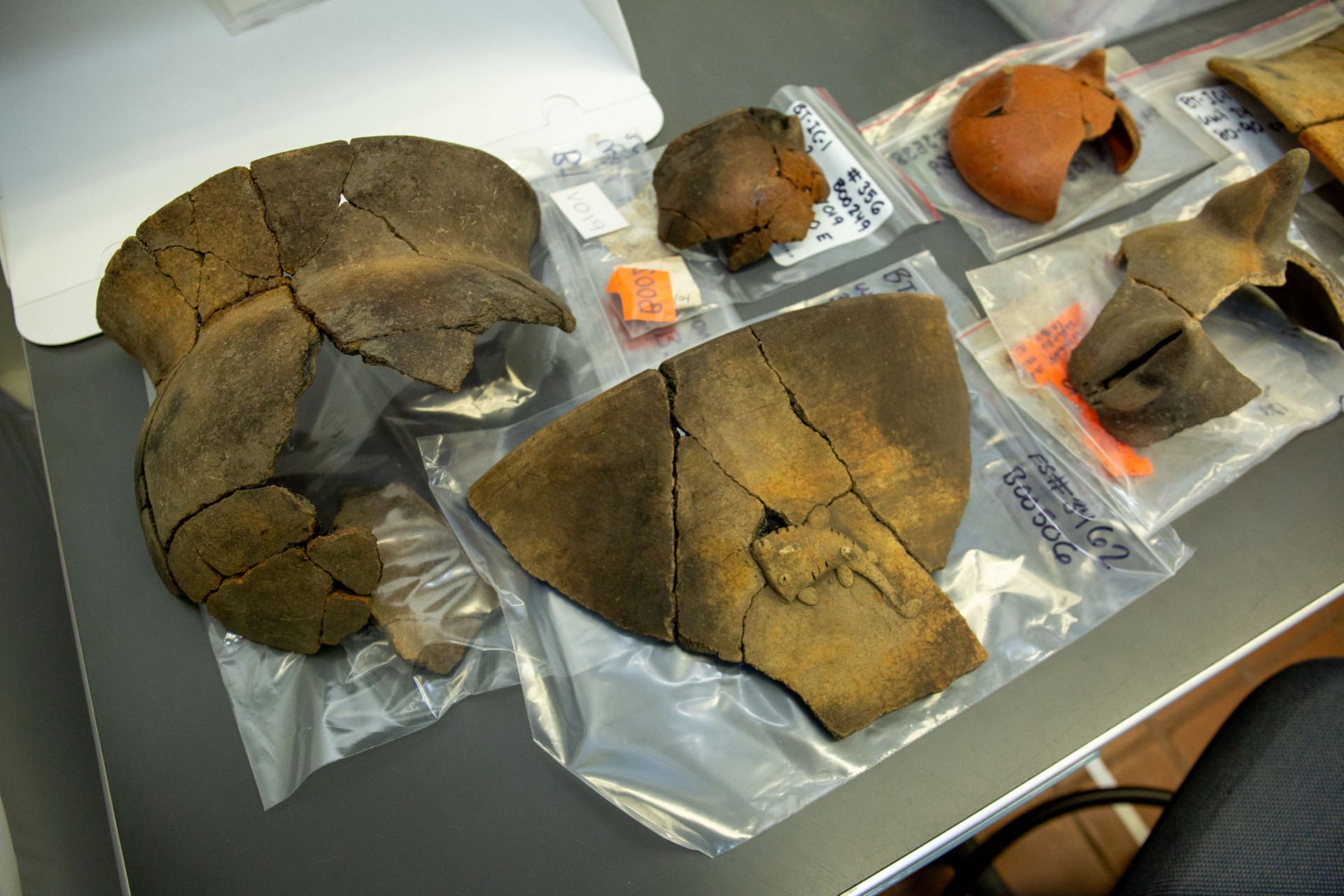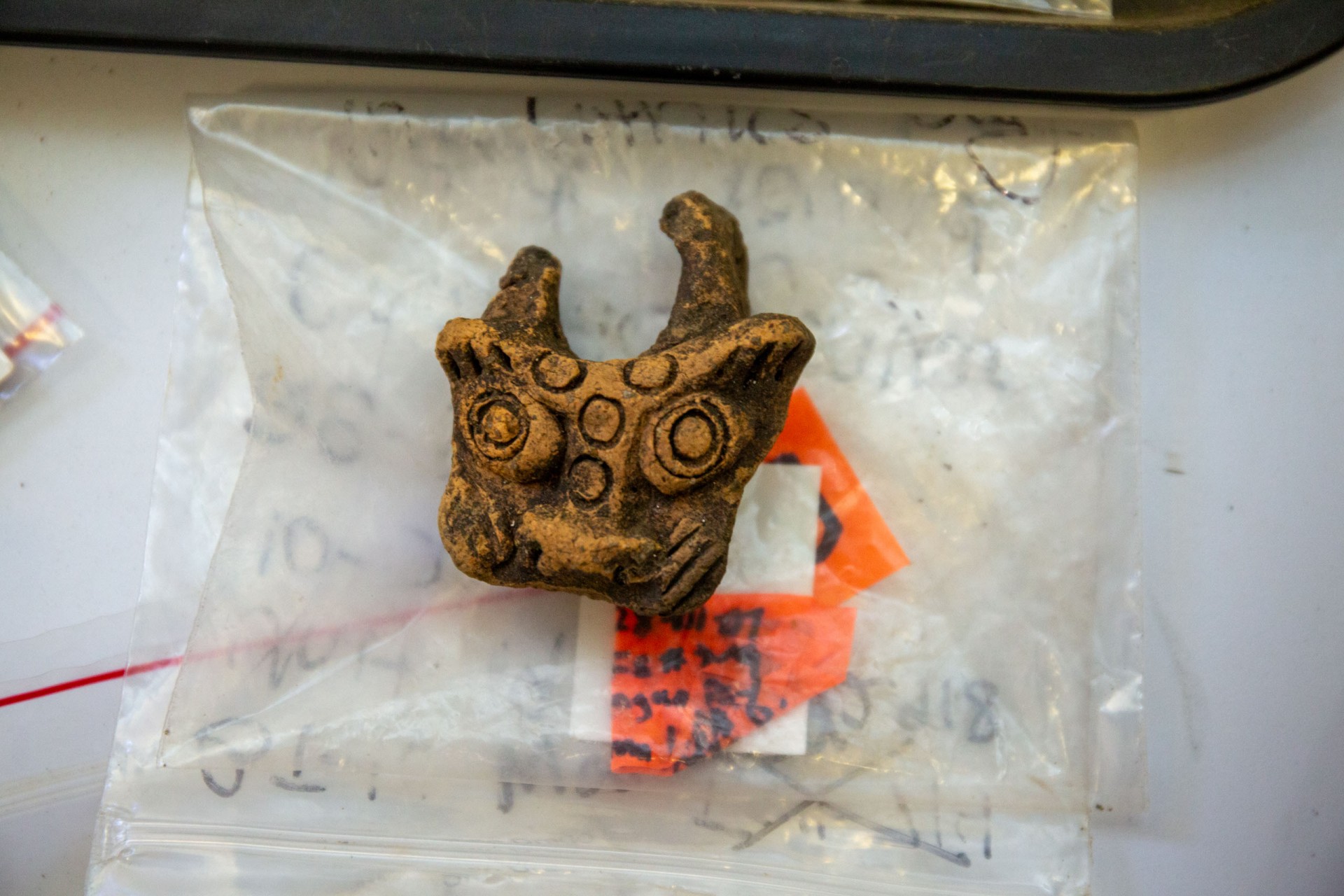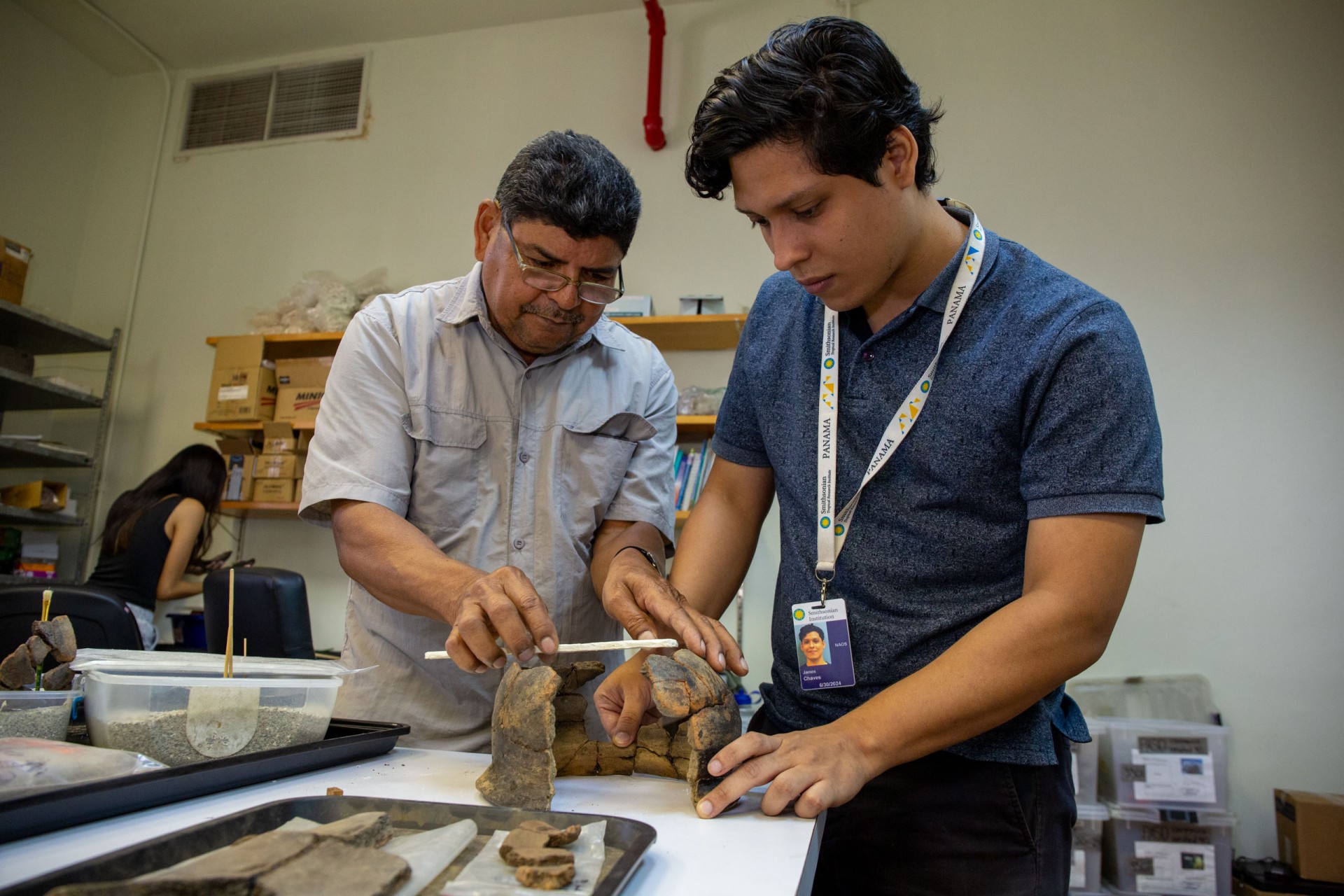Ceramic
puzzles
Archaeologists learn how to piece together the past
Story by Olivia Milloway
For six days, archeology technician Aureliano Valencia led a workshop on how to reconstruct pre-Columbian ceramics.
Resting her chin on her folded hands, Alexandra Lara, an archeology research technician at the Smithsonian Tropical Research Institute (STRI), stared at about two dozen pieces of sand-colored pottery. "When you don't have patterns, it's a lot harder," she said, pointing out decorative designs on one side and signs of use on the other. Lara had already grouped the sherds — the technical term for broken pieces of ceramic — into piles but was still missing a key piece to hold the structure together.
With nine others, Lara was learning from Aureliano “Yeyo” Valencia, an archeology research technician who has worked at STRI for 40 years, how to reconstruct pre-Colombian ceramics. "Everything we find, everything that is archeology, is part of our culture,” he said. Valencia was eager to share what he knew about ceramic conservation and restoration with a younger crowd in hopes a few would carry on the work; most of the workshop participants were from Panamanian universities. He also wanted to share another message: "we are just passing through [history].”
Valencia spent most of his long career working alongside STRI staff scientist and archeologist Richard Cooke (1946-2023). The two first met in 1979 while working in Casco Antiguo, Panama's ancient walled city built in the 1600s. Cooke was examining one of the district’s historic structures while Valencia worked at a construction site. Cooke offered Valencia and a few of his coworkers jobs with him in archeology: "Well, we changed jobs. Instead of lifting and lowering bricks, we worked with brushes and trowels," Valencia recalled with a laugh.
Valencia learned to reconstruct ceramics in the 1990s during a course taught by Panamanian restorer Jacinto Almendra. He honed his skills for a year at the Reina Torres de Arauz Anthropological Museum in Panama City before working with pieces recovered from Cooke’s excavations in Cerro Juan Diaz in the Panamanian province of Los Santos.
But all the pieces in this workshop came from Sitio Drago Archeological Project on Colón Island in Bocas del Toro, Panama, a site that dates to between 700 and 1450 A.D. Carly Pope, a doctoral student in the Interdepartmental Program in Archaeology at the University of California, Los Angeles and a short-term STRI fellow, organized the workshop and selected the ceramics for reconstruction. Pope's advisor and STRI Research Associate, Thomas Wake, initially excavated these materials from Sitio Drago in the 2000s and early 2010s. From that site, Pope has examined 785 bags — more than 28,000 sherds — to better understand the pre-Columbian pottery trade in the province of Bocas del Toro.
While Pope can uncover the likely geographic origin and mineral composition of a single sherd, a bag of broken ceramics doesn’t necessarily tell her much about its cultural origins, context, or use. Pope asked Valencia to teach her how to reconstruct the pieces from her field site, and he obliged. "Archaeology, like any science, is very collaborative. We need to be able to share our ideas and have these collaborative conversations so that we can create a more dynamic academic environment," she said. The workshop space, too, was the product of another collaboration; it was held in Staff Scientist Ashley Sharpe’s laboratory in STRI’s Center for Tropical Paleontology and Archeology (CTPA) in Panama City.
While a fairly straightforward process, reconstruction is not easy. The students work from the bottom of the pot up, using gravity to their advantage when possible, and clamps when it’s not. They create a glue by mixing resin beads with acetone that's strong enough to hold the pottery together but can also be easily dissolved if another archaeologist in the future wants to analyze it in a different way. Unlike other fields of science, in which multiple samples can be collected for experiments and trials, archaeologists have a finite number of specimens that must be preserved for study in perpetuity.
Nicole Smith-Guzman, STRI's Archeology Curator, thinks constantly about the future of these pieces. "In archaeology, there is a lot of emphasis— not only here in Panama, but all over the world— on excavations. There's not a lot of emphasis on what can be done next with the collections." As a curator, she works to ensure that the cultural heritage stored in collections is well cared for and lasts into the future while also being accessible for research and exhibition. "Yeyo is the only person at STRI with the technical expertise to lead this workshop. We're very lucky to have him here to teach us,” she said. Pope added, “It’s important to train all archaeologists in how to analyze ceramics, but it‘s particularly crucial to have capable students and technicians to carry on this important work if, and when Yeyo retires.”
Ana Ureña, an anthropology student at the University of Panama and STRI intern, was hard at work gluing together pieces of a jar likely made in Bocas del Toro province. "Reconstruction is like a puzzle," she said with a laugh. While Ureña's focus is on plant resource use in pre-Colombian Panama, she was enthusiastic about building a new skill and widening her knowledge of the field. "In the field of anthropology [of which archaeology is a part], everything is very broad. Wherever I study, there will be ceramics, and this laboratory experience will help me in the future," she explained.
James Chaves, a Panamanian STRI intern interested in ceramics who will begin a master's program in archeology in the US this August, reflected on the importance of Panamanian archeology while brushing glue along the ragged edges of a ceramic sherd. "In Panama, the issue of national identity is very important. As archeologists, we are reconstructing the identity of the ancient Panamanians, and therefore that of the Panamanians of today.” In his view, piecing together Panama’s pre-Colombian history will allow Panama to “continue to grow as a nation."
Over a slice of cake to celebrate the end of the workshop, Valencia delivered an impromptu speech to his students. He, too, was grateful for the learning community he experienced through the workshop. "The truth is that I feel very happy. I think this workshop has motivated me to revive the passion for restoration that I had for many years with Dr. Cooke in the archeology lab."

